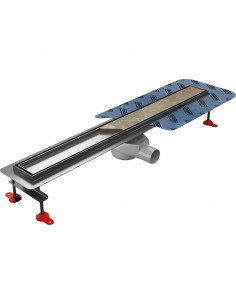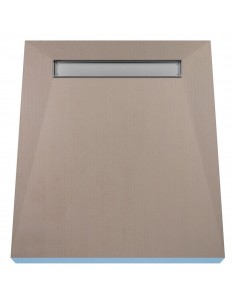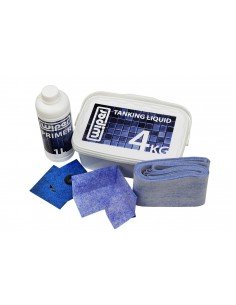- Matt R.
- Shower drains
- 3185 views

In the life of every house or apartment owner comes a moment when you realize that your bathroom is begging for renovation. Its appearance ceased to be the latest trend 20 years ago, leaking taps and silicons are growing new unknown species of mold. Below are some tips on how to plan everything from scratch and what to keep in mind so whole project can be painless.
IDEA
It all starts here. Most often you have some general ideas about how your future bathroom should look like. If you are not on a really tight budget, it's definitely worth asking a professional designer for help to create something based on your ideas. Modern interior design software and sample visualizations will significantly speed up and facilitate the entire process by taking hours of planning off our shoulders. Before taking it to the designer, you should carefully measure the room and draw its simple plan. Remember to include all non-standard room shapes, such as cornices and slants, which you can't or don't want to change. Keeping the current locations of water connections and sewage outlets will reduce the cost and time of the entire renovation. If you don't have any ideas yet, it's worth looking through catalogs in bathroom stores and some online photos.
ESTIMATE
This is the stage where your ideas have to be confronted with the costs you will have to bear. The costs can be divided into three elements. The first and easiest to calculate are equipment such as a mirror, radiator, sink, linear drain or even small items like light switches, wall lamps, towel racks. The second is building materials. For this calculation, you need a bit of knowledge or consultation with specialist. In any case, most of the materials demand can be calculated on the basis of square footage. You should divide whole space on squares add add them up. Here, in addition to tiles, you also need to consider everything that you can't see, for example: adhesives, plasters, gypsum boards, joints, silicones, paints, primers, profiles, screws, etc. Therefore, the most popular way of settling accounts with the contractor for this kind of work is labor with material included. This reveals the third element which is the cost of labor. If you do not have any recommended contractors, it is worth looking through the offers and opinions on the Internet and send some pricing queries. After adding everything and estimating a budget, it's worth adding some extra amount for unforeseen expenses and possible complications during renovation. Unfortunately, such situations (especially in old buildings) occur quite often. Therefore, for your own sake it is worth having a few pennies more to spend.
WHERE TO BUY?
Buying in building stores and the Internet both has its pros and cons. The undisputed advantage of buying stationary is the opportunity to see the product live and independently deliver to the renovated house. Unfortunately, the advantages of hardware stores end here. Online stores offer a much wider range of products and very often lower prices. In addition, each item of equipment can be viewed for hours in your own home and compared with offers between different stores with a few clicks. It's worth choosing stores that have a large number of good quality photos and rich descriptions. If in doubt, you can always contact the store and get more information. But remember, products should be ordered in advance. Thanks to this you will avoid any delays due to longer than usual delivery. Each piece of equipment present on site greatly simplifies the planning the location of, for example, mounting holes. Currently, the quality of online shopping has increased significantly. Stores often offer up to 30 days of unconditional return. Don't order products at the last minute if you don't have to.
More tips coming soon. Stay tuned!









